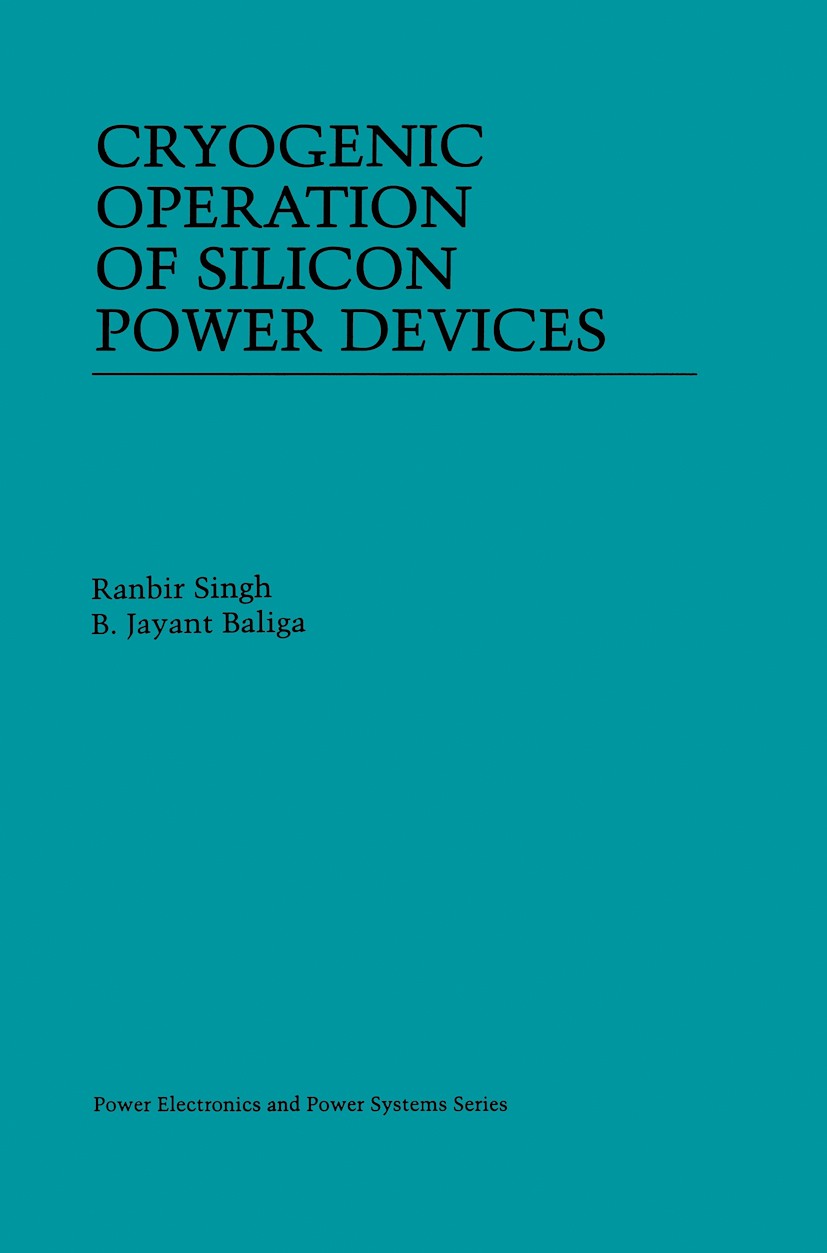| 書目名稱 | Cryogenic Operation of Silicon Power Devices |
| 編輯 | Ranbir Singh,B. Jayant Baliga |
| 視頻video | http://file.papertrans.cn/241/240503/240503.mp4 |
| 叢書名稱 | Power Electronics and Power Systems |
| 圖書封面 |  |
| 描述 | The advent of low temperature superconductors in the early 1960‘s converted what had been a laboratory curiosity with very limited possibilities to a prac- tical means of fabricating electrical components and devices with lossless con- ductors. Using liquid helium as a coolant, the successful construction and operation of high field strength magnet systems, alternators, motors and trans- mission lines was announced. These developments ushered in the era of what may be termed cryogenic power engineering and a decade later successful oper- ating systems could be found such as the 5 T saddle magnet designed and built in the United States by the Argonne National Laboratory and installed on an experimental power generating facility at the High Temperature Institute in Moscow, Russia. The field of digital computers provided an incentive of a quite different kind to operate at cryogenic temperatures. In this case, the objective was to ob- tain higher switching speeds than are possible at ambient temperatures with the critical issue being the operating characteristics of semiconductor switches under cryogenic conditions. By 1980, cryogenic electronics was established as another branch of e |
| 出版日期 | Book 1998 |
| 關(guān)鍵詞 | Diode; JFET; MOSFET; Thyristor; control; diodes; environment; material; model; tables; transistor |
| 版次 | 1 |
| doi | https://doi.org/10.1007/978-1-4615-5751-7 |
| isbn_softcover | 978-1-4613-7635-4 |
| isbn_ebook | 978-1-4615-5751-7Series ISSN 2196-3185 Series E-ISSN 2196-3193 |
| issn_series | 2196-3185 |
| copyright | Springer Science+Business Media New York 1998 |
 |Archiver|手機版|小黑屋|
派博傳思國際
( 京公網(wǎng)安備110108008328)
GMT+8, 2025-10-16 12:33
|Archiver|手機版|小黑屋|
派博傳思國際
( 京公網(wǎng)安備110108008328)
GMT+8, 2025-10-16 12:33


